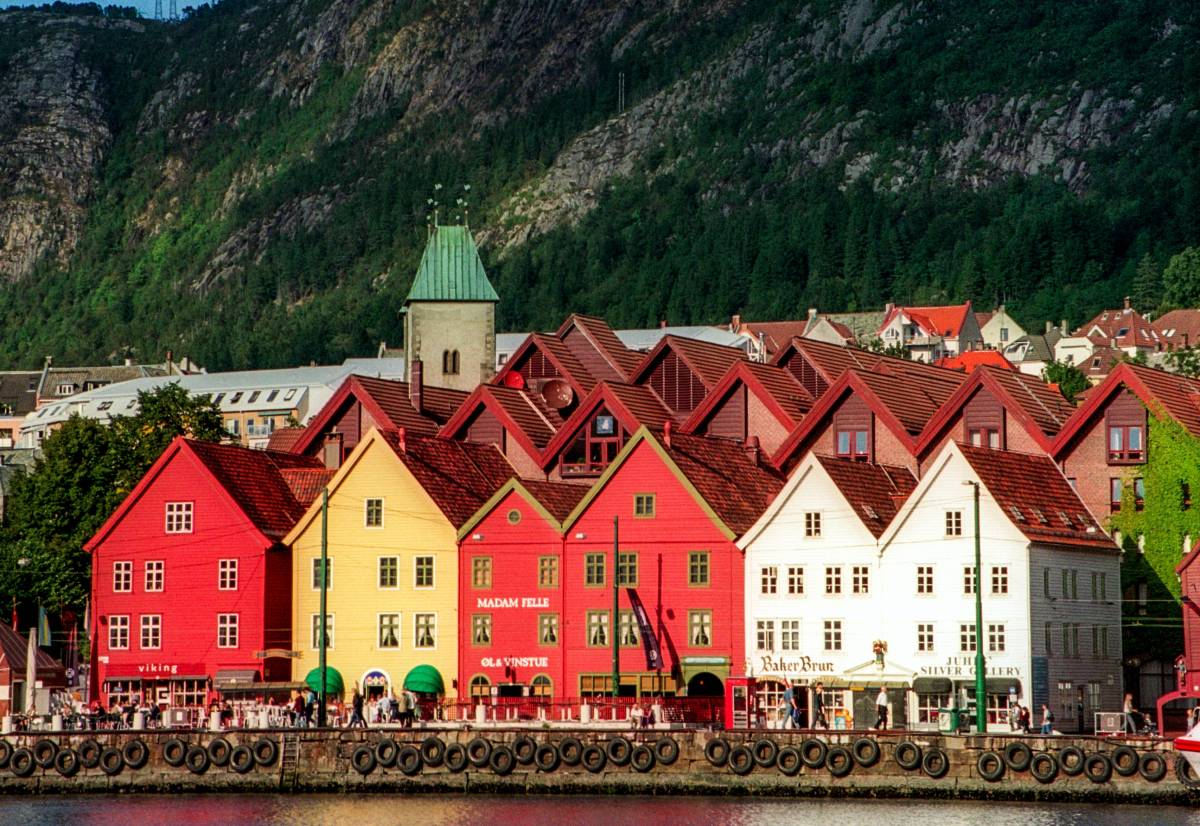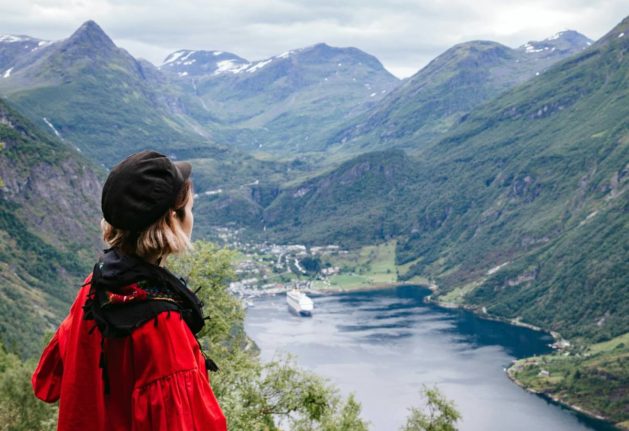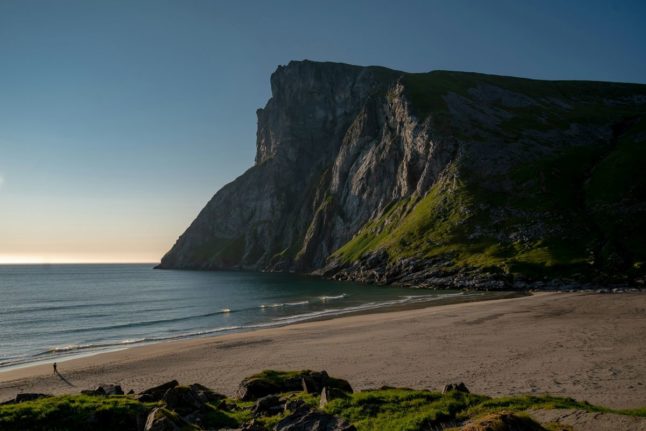Norway has no shortage of stunning landscapes and fascinating buildings and monuments. However, only a select few sites have been included in the coveted UNESCO World Heritage List.
These sites showcase the country’s rich history, spectacular landscapes, and unique cultural heritage, and visitors to Norway often make the extra effort to visit some of them.
READ MORE: Five fantastic destinations in Norway you should visit in 2024
Join us as we look into where you can find these UNESCO World Heritage sites – and what makes them so special.
Røros, Trøndelag County: Showcasing Norway’s mining legacy
Dating back to the 17th century, Røros in Trøndelag, central Norway, is one of Europe’s oldest towns characterised by wooden architecture.
The mining town and community’s heritage in Røros remain visible to this day through the layout of the street and the specific houses.
It became a listed UNESCO World Heritage site in 1980, a testament to its more than three centuries-long history, which has shaped its character and unique cultural identity.
In 2010, this World Heritage Site was extended to encompass the surrounding area due to the valuable insights it offers into the historical mining operations and the adaptation of its residents to the mountainous landscape and harsh climate.

Bryggen, Bergen Municipality: Walk among the wooden buildings of a medieval trading hub
The Bryggen Wharf, located in Bergen, western Norway, is a testament to the city’s vibrant history as a medieval trading hub.
Its iconic wooden buildings, dating back to the 11th century, are lined along the harbour’s waterfront in Bergen’s Old Town, offering a glimpse into the city’s Hanseatic past.
READ MORE: 24 hours in Bergen: Everything you should see and do
Bryggen’s narrow wooden alleyways evoke a sense of a bygone time, where merchants from across Europe traded goods through this hub.
Today, it’s one of Bergen’s most prominent tourist magnets and can be pretty crowded during the peak summer season. It also boasts the honour of being the first Norwegian site listed by UNESCO in 1979.
Vega Archipelago, Nordland County: A story of a resilient fishing community
In the Vega Archipelago, a group of more than 6000 islands and islets in Nordland County, northern Norway, a remote fishing community has thrived for millennia, relying on the sea’s bounty to get by.
UNESCO recognised the Vega islands for their unique cultural landscape, shaped by centuries of human resilience, stating: “The Vega archipelago reflects the way fishermen and farmers have, over the past 1,500 years, maintained a sustainable living and the contribution of women to
eiderdown harvesting.”
In this area, traditional fishing practices have been passed down from generation to generation, preserving a way of life that has remained unchanged for centuries.
The Vega Archipelago is also famous among bird watchers, as it is home to more than two hundred bird species.
Urnes Stave Church, Vestland County: One of the world’s oldest wooden structures
Built in the 12th century, Urnes Stave Church is a testament to Norway’s medieval craftsmanship and religious heritage. Its timeless beauty attracts visitors from around the globe year-round.
Located at Ornes, along the Lustrafjord in Luster Municipality, Vestland County, its main draw is that it’s one of the world’s oldest wooden structures.
READ MORE: What changes about travel to and from Norway in 2024
The church, constructed in the Romanesque style, stands out for its age, impressive carvings, and overall excellent condition.
The church was added to the UNESCO World Heritage List in 1980.
Alta Rock Art: The oldest among Norway’s world heritage sites
Alta’s rock art is located in (and in the vicinity of) Alta Municipality, Troms og Finnmark County, in northern Norway.
This ancient rock art, which includes around 6,000 carvings and 50 rock paintings, is a testament to the early hunter-gatherer communities that once roamed these lands.
The petroglyphs– estimated to be between 4,000 and 6,000 years old – date back thousands of years and offer a fascinating glimpse into Norway’s prehistoric past. The intricate carvings depict scenes of daily life and spiritual rituals.
This makes them the most significant artefacts of early hunter-gatherer life discovered in the high north.
The rock art was added to UNESCO’s list in 1985.
Struve Geodetic Arc, Hammerfest: A story of scientific discovery
The Struve Geodetic Arc is a network of measuring points spanning several countries.
The points are part of a survey conducted between 1816 and 1855 by the astronomer Friedrich Georg Wilhelm Struve.
This survey represented the first precise measurement of a long stretch of a meridian, aiding in establishing the exact size and shape of the planet. It marked a significant advancement in earth sciences and topographic mapping.
From the northernmost point in Hammerfest to the rugged mountains of Kautokeino, these geodetic points tell the story of scientific discovery and collaboration on a global scale.

West Norwegian Fjords: Geirangerfjord and Nærøyfjord
Nature takes centre stage in the West Norwegian Fjords, home to the majestic Geirangerfjord and Nærøyfjord.
These awe-inspiring landscapes have captivated visitors for centuries and were rightfully recognised by UNESCO for their exceptional beauty in 2005: “Their exceptional natural beauty is derived from their narrow and steep-sided crystalline rock walls that rise up to 1,400 metres from the Norwegian Sea and extend 500 metres below sea level.”
As you cruise along these fjords, you’ll be mesmerised by their sheer scale and grandeur. The area’s cultural landscape is also worth the visit, as it’s defined by aged farmhouses and outbuildings, which adds another layer of uniqueness to the region.
Rjukan-Notodden Industrial Heritage Site, Telemark: A key site of the Second Industrial Revolution in Northern Europe
Enter the industrial heartland of Rjukan and Notodden, Norway’s latest addition to UNESCO’s prestigious World Heritage Sites.
Their induction into the list unfolded in 2015, with a regal ceremony graced by Norwegian Crown Prince Haakon in 2018.
Nestled in the rugged terrain of Telemark, these towns bore witness to a seismic shift in the early 20th century, heralding what history now recognises as the Second Industrial Revolution across northern Europe.
It was a time of innovation, where coal ceded its dominance to the force of hydroelectric power, catalysing a wave of industrial progress.
Today, echoes of this critical era reverberate through the region’s awe-inspiring natural landscapes.
You can spot dams, power stations, railways, and other remnants of the area’s industrial past scattered across the countryside, all reminders of the incredible feats of human creativity in the 20th century.



 Please whitelist us to continue reading.
Please whitelist us to continue reading.
Member comments